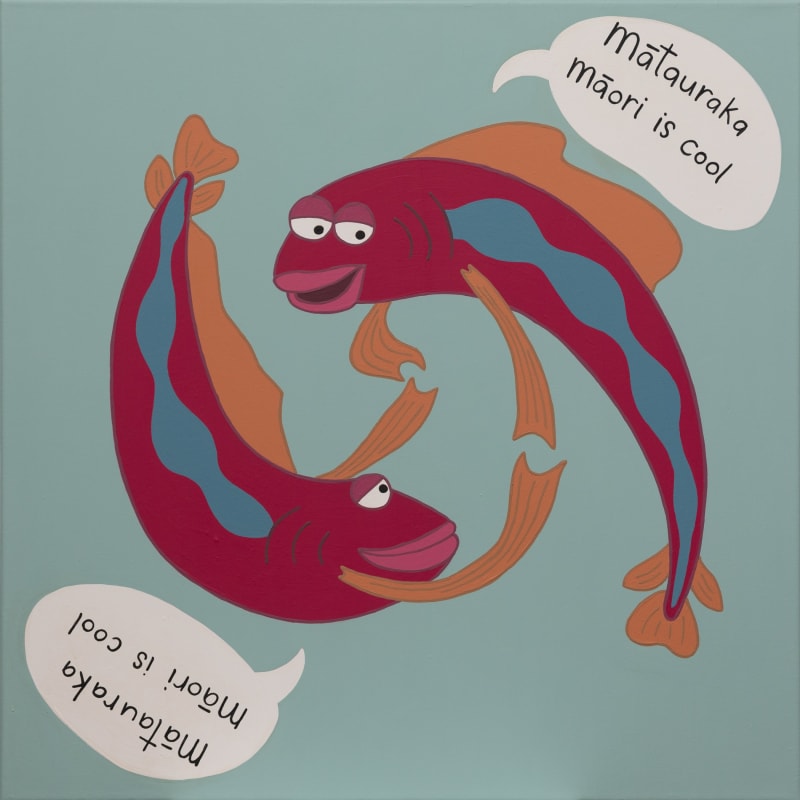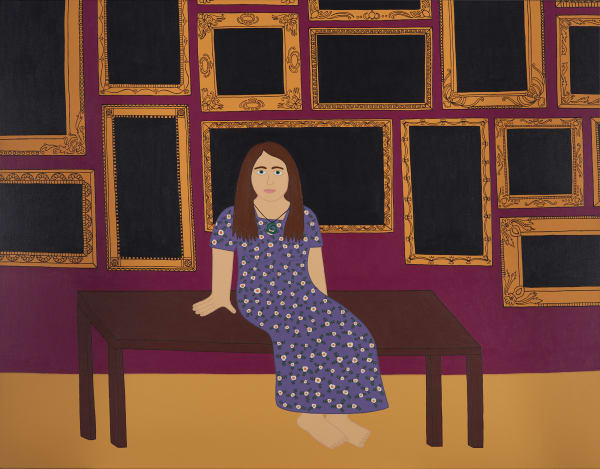Ayesha Green, The Radical Utopia of the Great Pacific
Introduction: The Radical Utopia of the Great Pacific by Ayesha Green by Francis McWhannell
Ayesha Green’s new solo exhibition, The Radical Utopia of the Great Pacific, extends on the artist’s well- known use of copying, or near-copying, as a means of exploring the ways in which power—cultural, economic, and political—is structured and communicated. The exhibition title is a reference to the New Zealand Association, founded in 1837 on the ideas of the charismatic and persuasive Edward Gibbon Wakefield, who zealously promoted the colonisation for New Zealand via ‘private speculation’. The association evolved into the New Zealand Company, the commercial body that founded Wellington.
An important impetus for the exhibition was the recent formation of the National-ACT-New Zealand First coalition government, which threatens serious injury to Te Tiriti o Waitangi, te reo Māori, and Māori at large. In the past, Green has often used older and ‘venerated’ forms of art, including history painting, formal portraiture, and public sculpture, as discursive frameworks. Here, she turns to popular culture, drawing on visual and narrative aspects of the 1989 animated musical film The Little Mermaid—adapted by the omnipresent Walt Disney Company from Hans Christian Andersen’s fairy tale of the same name from 1837— and associating them with ideas from Māori scholarship.
There are noticeable resonances between The Little Mermaid and Māori experiences. The central character, Ariel, calls a vast ocean home. Life-shaking effects flow from her encounter with a foreign, seafaring people. Engaging with their world involves the signing of a dubious contract, which entails the destruction of her voice, the core of her identity, and threatens her sovereignty. Of course, the film is not a perfect fit in symbolic terms, and so Ayesha adapts it, as Disney adapted Andersen’s text, and as she has always done with her source materials. As with previous bodies of work, she pours herself into the characters. They express her attitudes, speak her words.
Forming a coda to The Radical Utopia of the Great Pacific is a large self-portrait showing Ayesha at a museum (perhaps the nearby Museum of New Zealand Te Papa Tongarewa, where works of hers are presently on display). This piece alludes to the wide range of visual domains in which hierarchies, histories, and social priorities are set. Read in conjunction with the other works, which are hung ‘salon style’, it invites visitors to consider the methods we use to recount stories, within public and educational institutions, but also in private spaces, like dealer galleries and homes. Ayesha advocates generosity and accessibility but also frankness and firmness as we contend with issues of vital importance to Māori and tauiwi alike.
**A long form essay from Francis McWhannell contributes to the greater understanding of the exhibition. We encourage you to read the full length essay here or click on the link below.



















